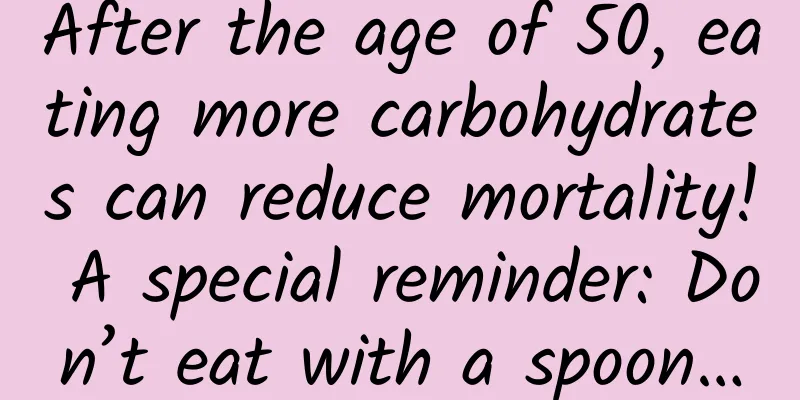13 types of cancer actually "prefer" the same type of people! Many people don't care until they get sick

|
This article was reviewed by Hu Zhongdong, associate chief physician, health manager, registered nutritionist With the increase of life pressure and the change of lifestyle, obesity is becoming more and more common. But do you know that being fat not only affects your dressing style but also causes many health problems! Relevant surveys and studies show that the risk of 13 types of cancer will be significantly increased by being fat. Is this true? What is considered fat? And how should we control our weight? This article will help you find out! Copyright image, no permission to reprint I heard that 13 types of cancer are related to "fat" Is it true? A moderate amount of fat can support and stabilize internal organs and is good for health, but if there is too much fat in the body, it may lead to disease. According to a report by the International Agency for Research on Cancer (IARC) Obesity Working Group, there is sufficient evidence to link excess body fat to 13 types of cancer: breast, colorectal, endometrial, esophageal, gallbladder, kidney, liver, meningioma, multiple myeloma, ovarian, pancreatic, stomach and thyroid. Copyright image, no permission to reprint What exactly is considered "fat"? 1. Body Mass Index (BMI) Body mass index (BMI) is a body shape judgment standard currently used in the medical community. It uses the ratio between height and weight to measure whether a person is too fat or too thin. Body mass index (BMI) = weight (kg) / height² (m²) BMI is the most commonly used indicator for judging overweight or obesity. The BMI reference range for the Chinese population is 18.5-23.9 kg/m². BMI ≥24 kg/m² is considered overweight, and BMI ≥28 kg/m² is considered "obese". Losing weight is imperative. 2. Waist circumference Body mass index cannot reflect the distribution of fat. Even some people with normal body mass index still have abdominal obesity, so waist circumference is also very important. The correct way to measure waist circumference: the person being measured stands upright with his feet naturally separated by about 30cm, breathes steadily, and does not inhale heavily. The examiner uses a soft tape measure with a minimum scale of 1mm to measure the waist circumference horizontally around the abdomen at the midpoint of the line between the highest point of the iliac crest and the lower edge of the 12th rib, keeping the tape measure close to the skin without pressing on it. If the waist circumference of an adult male is ≥90cm and that of an adult female is ≥85cm, then the waist circumference is over the standard and needs to be controlled. Copyright image, no permission to reprint 3. Waist-to-hip ratio Waist-to-hip ratio, which is the value obtained by dividing waist circumference by hip circumference, is also an important indicator for assessing obesity. Generally speaking, the waist-to-hip ratio of healthy men should be 0.85~0.9, and that of women should be 0.75~0.8. If it is higher than 0.9 for men and higher than 0.8 for women, there is a higher risk of obesity. 4. Subcutaneous fat thickness The thickness of subcutaneous fat of the abdominal wall should be less than 15 mm for men and no more than 20 mm for women. This usually requires a professional sebum thickness meter to measure. How to control weight scientifically? Weight loss needs to be gradual. The World Health Organization recommends: lose 0.5 kg to 1 kg per week, and 1 kg to 3 kg per month. This "constant speed" weight loss method causes less damage to the body and is not prone to rebound. 1. Young and middle-aged people: remind yourself anytime and anywhere Adults should try to follow the principle of "full breakfast, good lunch, and light dinner" in their diet. Do not just have a quick breakfast, order takeout for lunch, or eat too much for dinner. 1. Remind yourself to eat less Do not place high-calorie snacks in easy-to-reach places such as offices and living rooms, and replace them with nuts, yogurt, etc. Do not be tempted by "buy one get one free" promotions, buy small packages of food or package them separately; change the dinner plate to a medium size. 2. Remind yourself to eat less oil, salt and sugar Order less takeout and prepare your own lunch as much as possible. Cook mainly by steaming, blanching, stewing, and mixing cold dishes, and use less oil, salt, and sugar. Copyright image, no permission to reprint 3. Remind yourself that it’s time to move Put a pair of running shoes in the living room to remind yourself to exercise more, and put a scale in the bedroom to measure yourself every morning and evening. Middle-aged people in particular should avoid sitting for long periods of time and do more exercises to slim the waist and abdomen, such as plank support, supine waist twists, static or dynamic hip bridges, etc. You can practice squats, side leg raises, etc. during breaks at work; running is suitable for most people, 3 to 5 times a week, at least 30 minutes each time. 2. Elderly people: muscle building is the key 1. Thin elderly people Elderly people with thin bodies should do moderate exercise to help enhance muscle vitality. Brisk walking, jogging and other exercises require less effort and are easy to carry out and stick to. You can exercise 1 to 2 times a day, each time for about half an hour, until you sweat slightly. 2. Fat old people Especially for the elderly with chronic diseases such as "three highs", they should lose weight appropriately and improve their diet. They should eat small and frequent meals, 4 to 5 meals a day, and eat until they are 70% full at each meal. Eat an egg, drink a glass of milk, eat 50 grams of fish and shrimp, 50 grams of poultry, and add 50 grams to 100 grams of soy products every day to ensure the intake of high-quality protein. Cereals, beans and potatoes are the most economical sources of energy, such as sweet potatoes, potatoes, yams, etc. Pay attention to the combination of coarse and fine grains. Copyright image, no permission to reprint 3. Teenagers: Consume and replenish at the same time According to the recommendations of the Chinese Nutrition Society, children in the growth and development period should consume "a cup of milk, an egg, two walnuts, two fruits, three portions of meat, three handfuls of vegetables, and half of them should be cereals and potatoes." Stay away from fattening foods, such as candy, biscuits, potato chips, jelly, etc., eat less fried foods, choose nuts that are not over-processed, try to drink pure milk, and choose less or no flavored yogurt. Go to bed early and get up early every day, follow a proper work and rest schedule, and ensure adequate sleep time. Toddlers and primary school students should sleep 10 hours a day, junior high school students should sleep 9 hours a day, and high school students should sleep 8 hours a day. This is beneficial to growth and development and weight control. Appropriate sun exposure and outdoor exercise for 1 hour a day, such as ball games and rope skipping, can increase bone strength and consume excess calories. Source: CCTV Life Circle The cover of this article and the pictures with watermarks in the text are from the copyright library and are not authorized for reproduction |
>>: Why do trains have lights on during the day? Here's some knowledge!
Recommend
How to use information flow advertising to increase APP downloads?
How to use information flow advertising to increa...
You will definitely understand what iteration means.
Editor's Note There is an interesting phenome...
Cheese Rhythm Cao Maogui Wealth Secret Key Stock Market Training Course 10 Videos
Cheese Rhythm Cao Maogui Wealth Secret Key Stock ...
They are most afraid of you going to the hospital...
“As long as you can hold it in, there is no need ...
iOS 15 "Find My Location" new feature supports real-time location tracking even when the iPhone is turned off
On the morning of August 2, Apple has been improv...
Can fish oil lower blood lipids? Many people may be eating it wrong...
gossip “Can taking fish oil lower blood lipids?” ...
#千万IP创科普# The little gargoyle: silently "molded" into a fish by our ancestors, it turns out to have a special mission...
"Little Gargoyles" The comic introduces...
China Shipbuilding Industry Association: China's shipbuilding capacity utilization monitoring index hit a 10-year high in 2022
According to the China Shipbuilding Industry Asso...
From the perspective of "friend circle is visible for three days", let's talk about how we should face social networks
Why should you set your Moments to be visible onl...
Seven Tips to Increase App Revenue (Part 1)
Mobile marketing is a fluid ecosystem. If CPs wan...
World Giraffe Day丨How much do you know about the tallest mammal on land?
June 21st is World Giraffe Day. Giraffes are the ...
How much does it cost to join an automatic printing mini program in Anqing?
What is the price to join the Anqing automatic pr...
Decrypting “User Uninstall”! 3 data points worth paying attention to!
Do you want users to use your app for a long time...
APP rapid operation and promotion, never miss the new media channel operation
When most APP operators are operating, they want ...
The truth about mooncakes: What kind of cake can be called a mooncake?
Written by Wei Shuihua Header Image | Who is the ...









